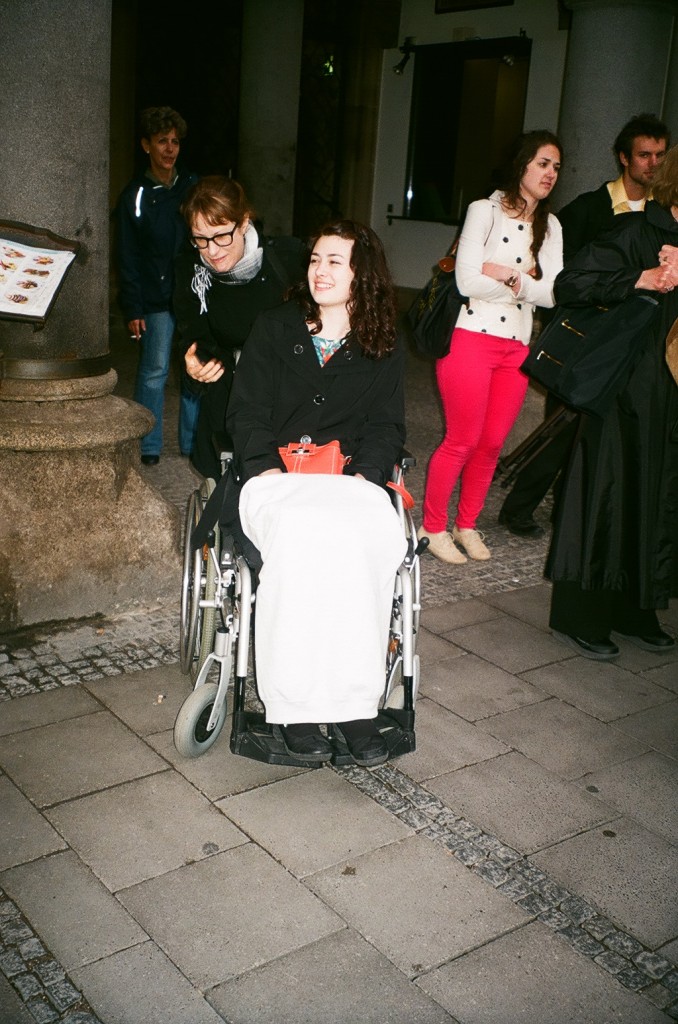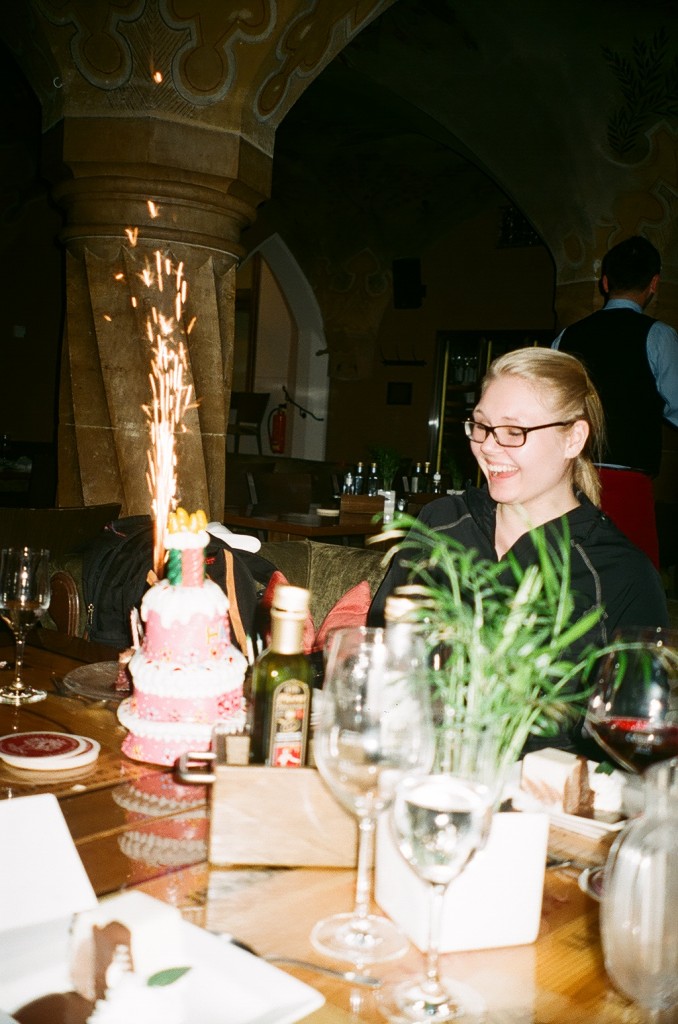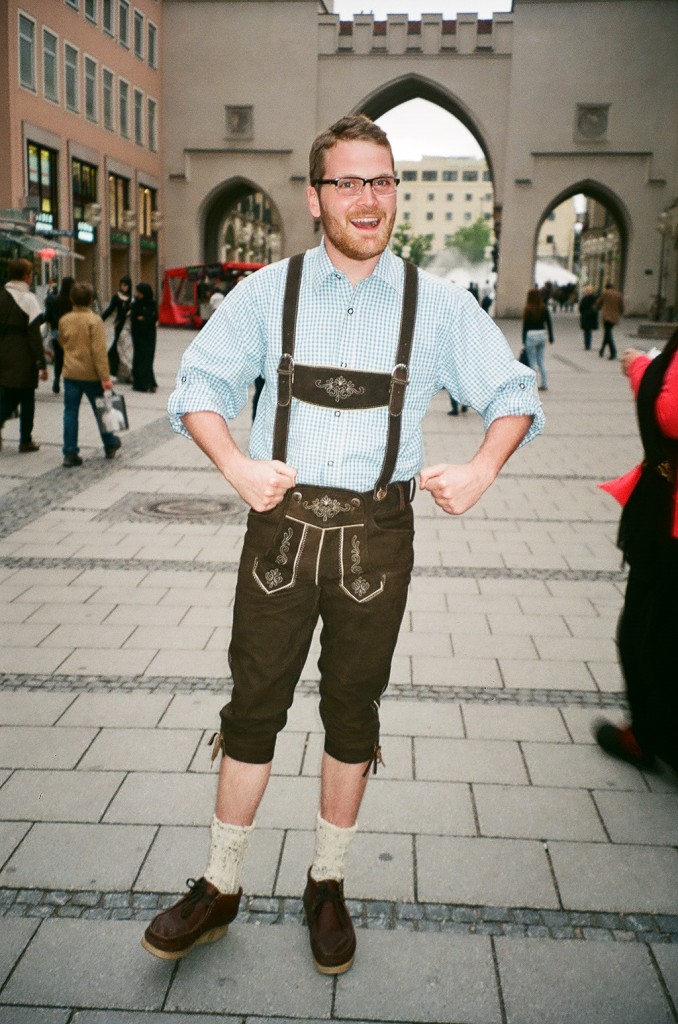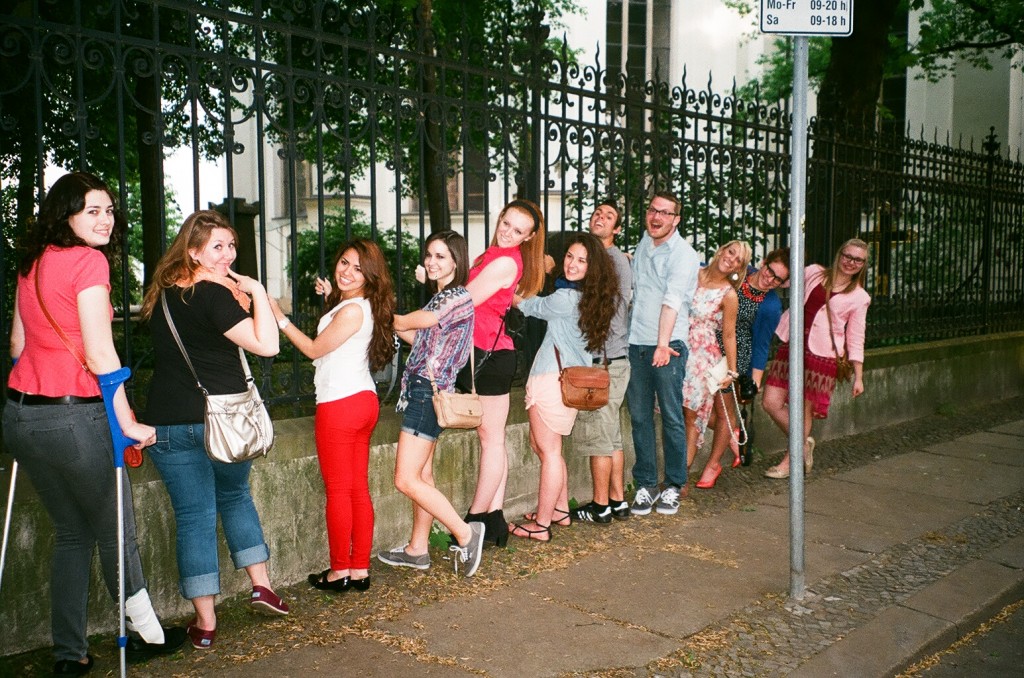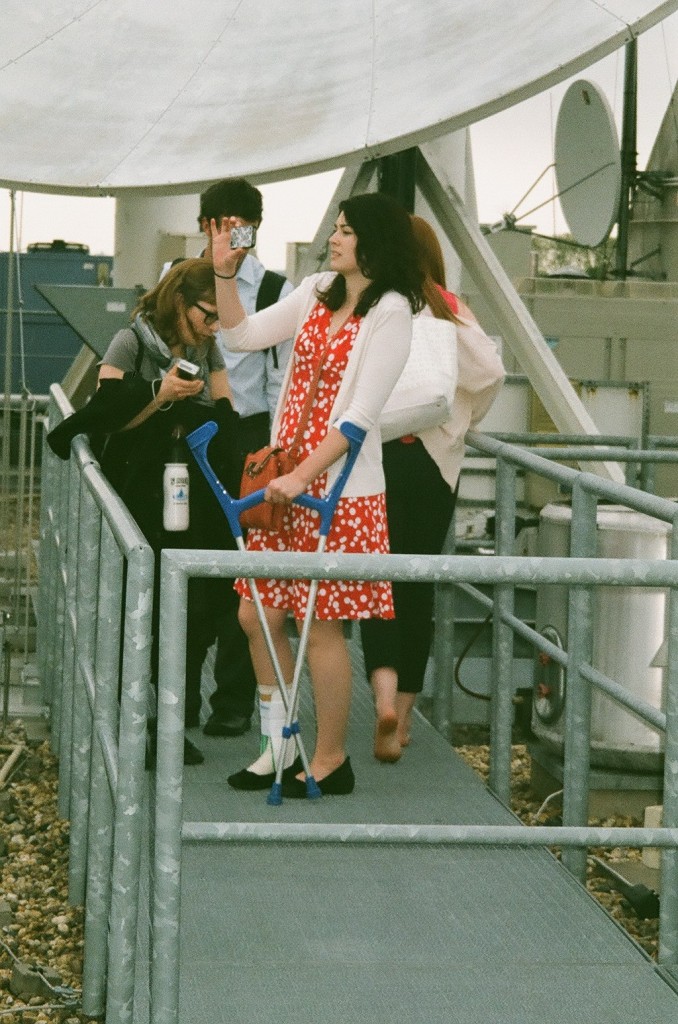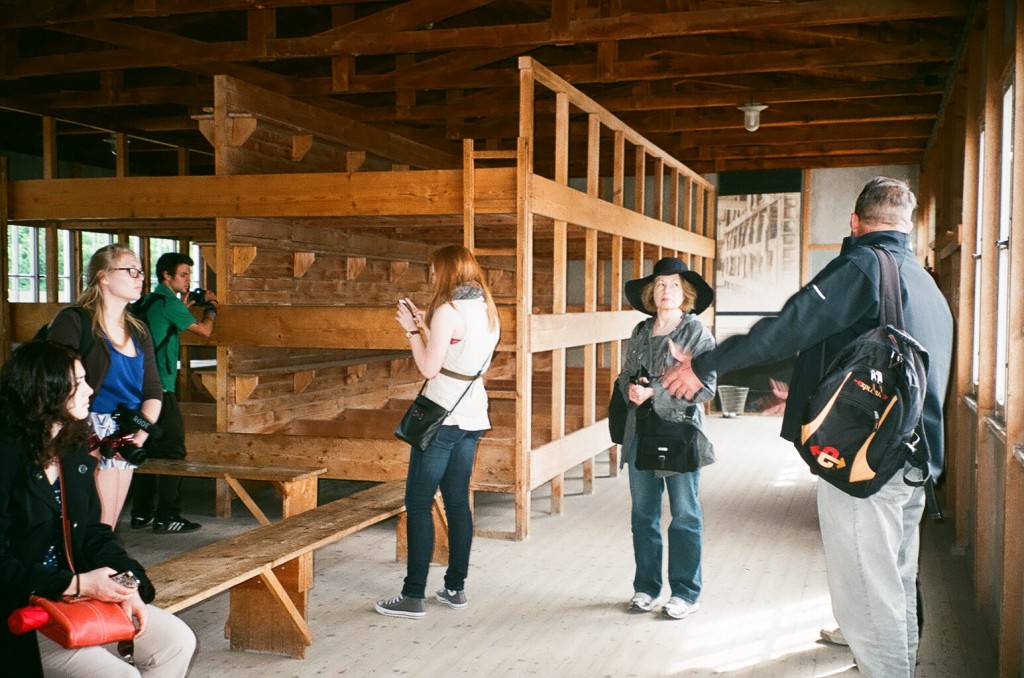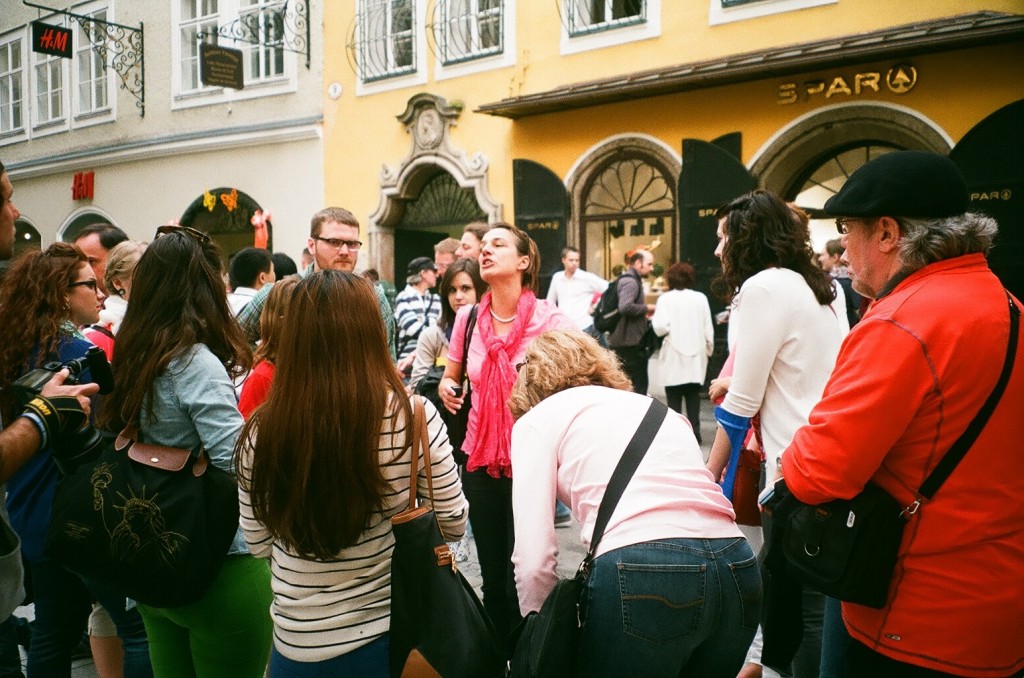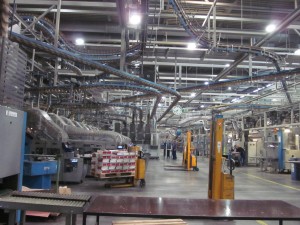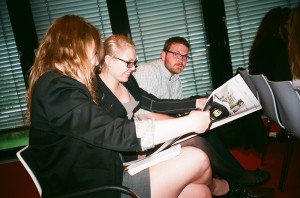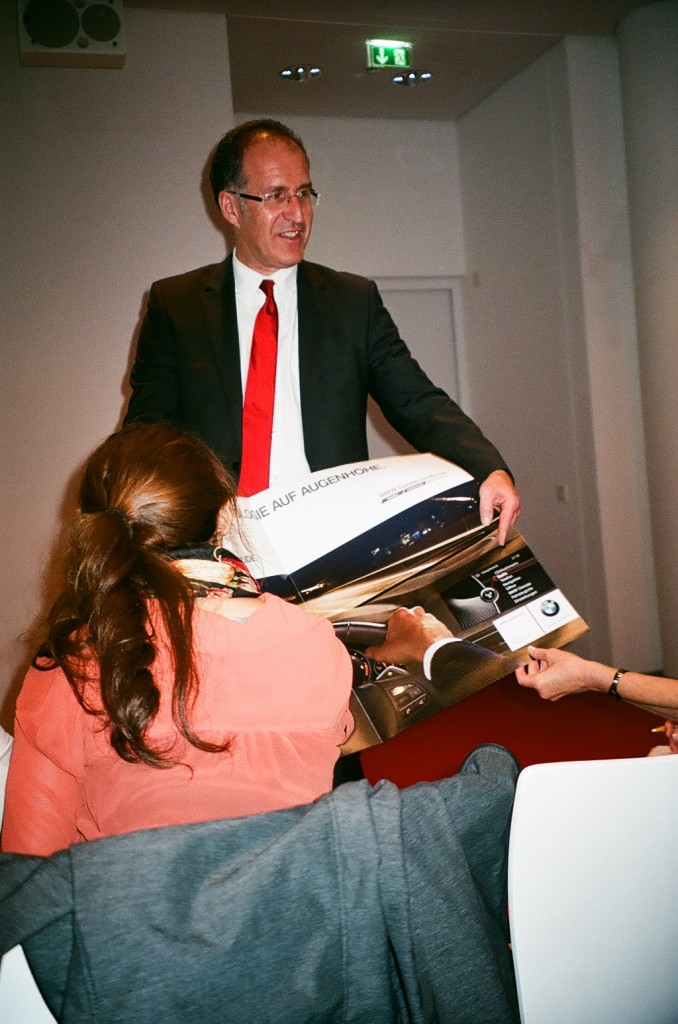
Michael Stengl, product manager of advertisements at Sueddeutsche Zeitung, shows the students and faculty specially printed BMW advertisements.
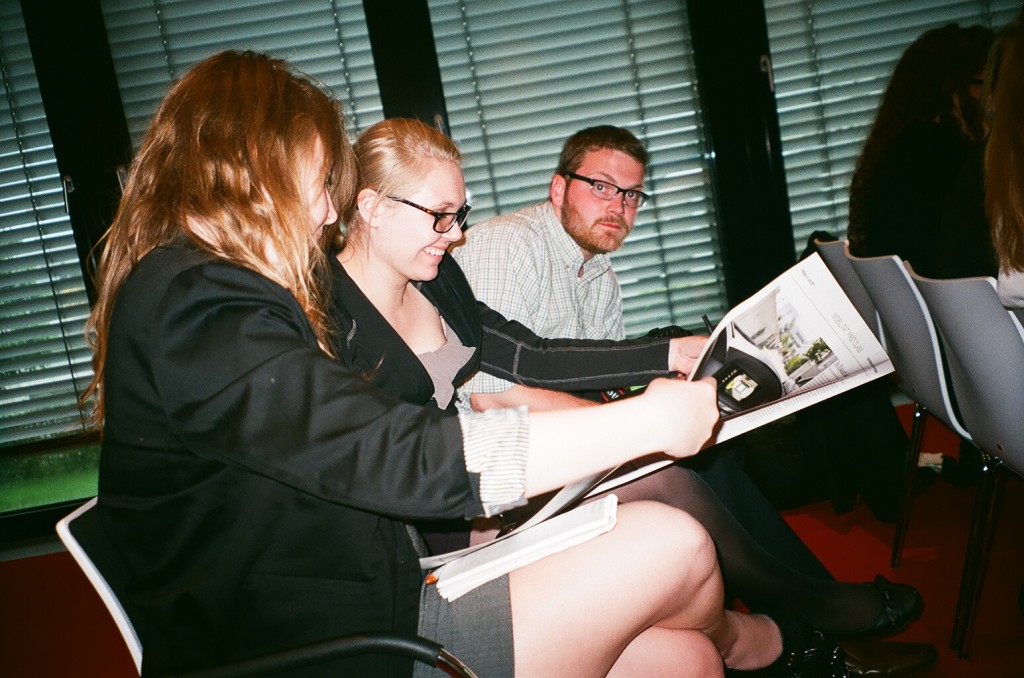
Alexa Blanchard and Johnie Freiwald check out a special advertisement in the pages of Munich’s Sueddeutsche Zeitung.
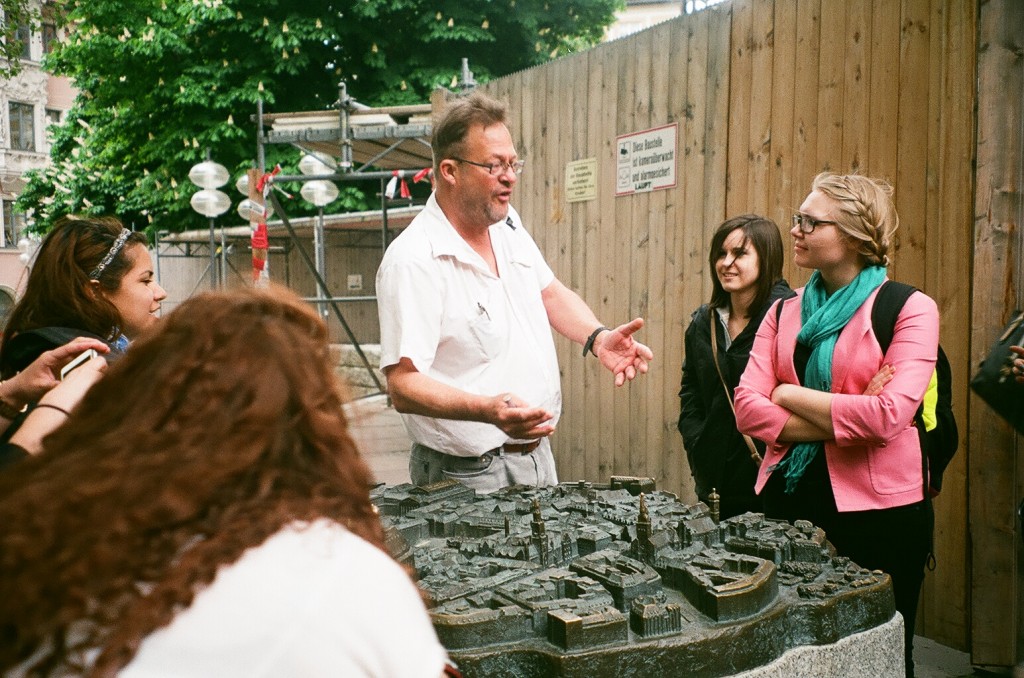
Munich tour guide Anroud Beck explains a model of the rebuilt Munich to students on the day they arrived.
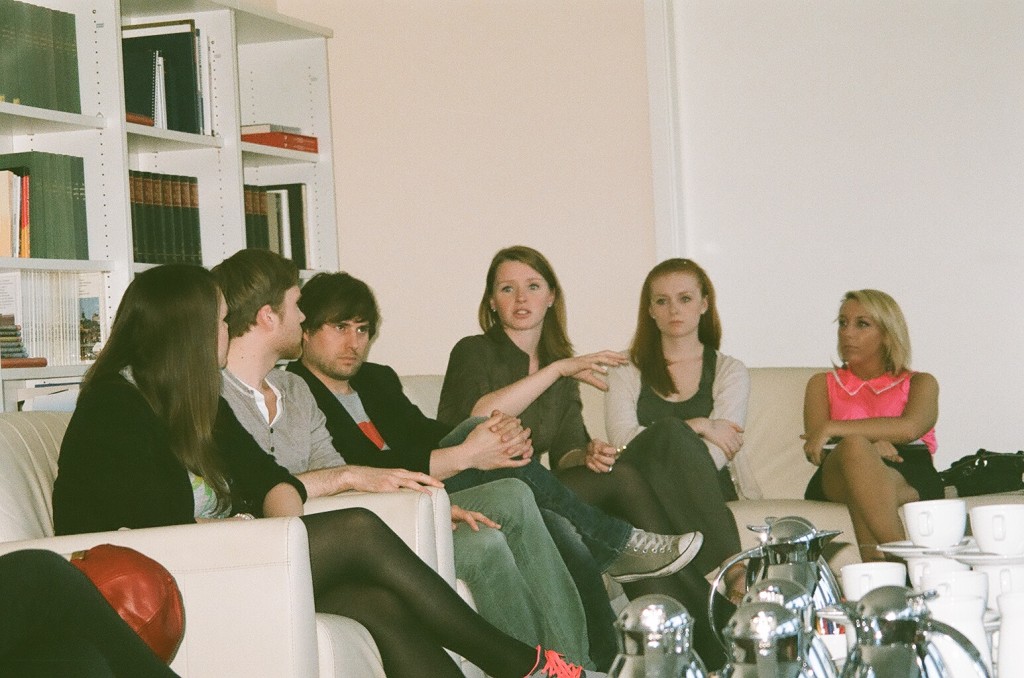
Axel Springer Academy students explain what they’re learning to the Point Park students and faculty.
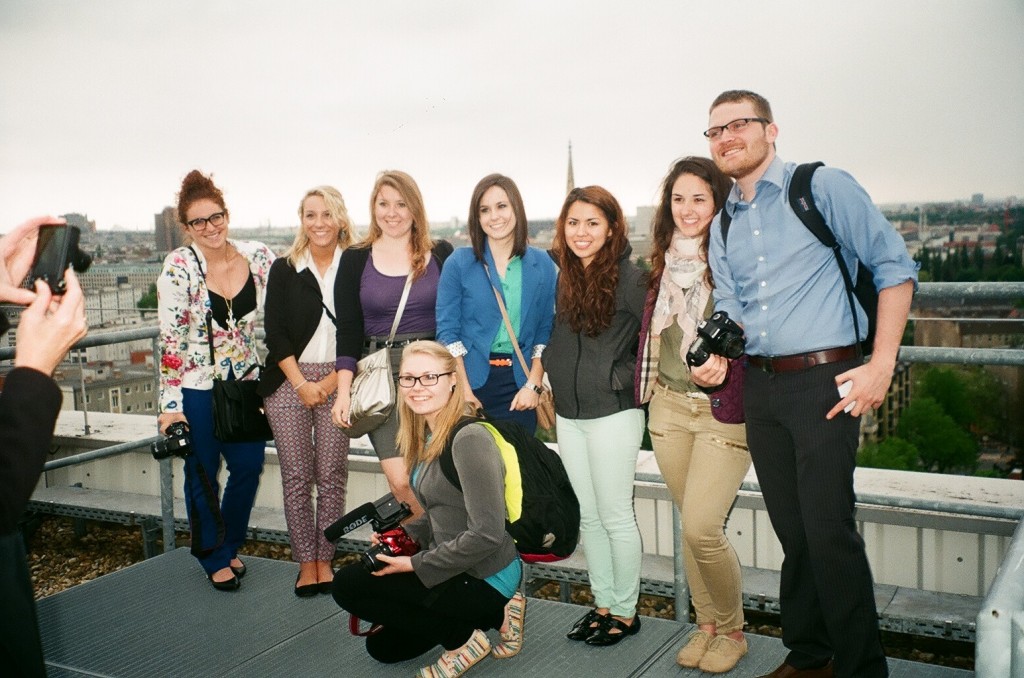
Following the Deutsche Welle visit, managing director Fabian von der Mark took the Point Park group to the station’s rooftop for a fabulous view of downtown Berlin. Here part of the group poses for a photograph.
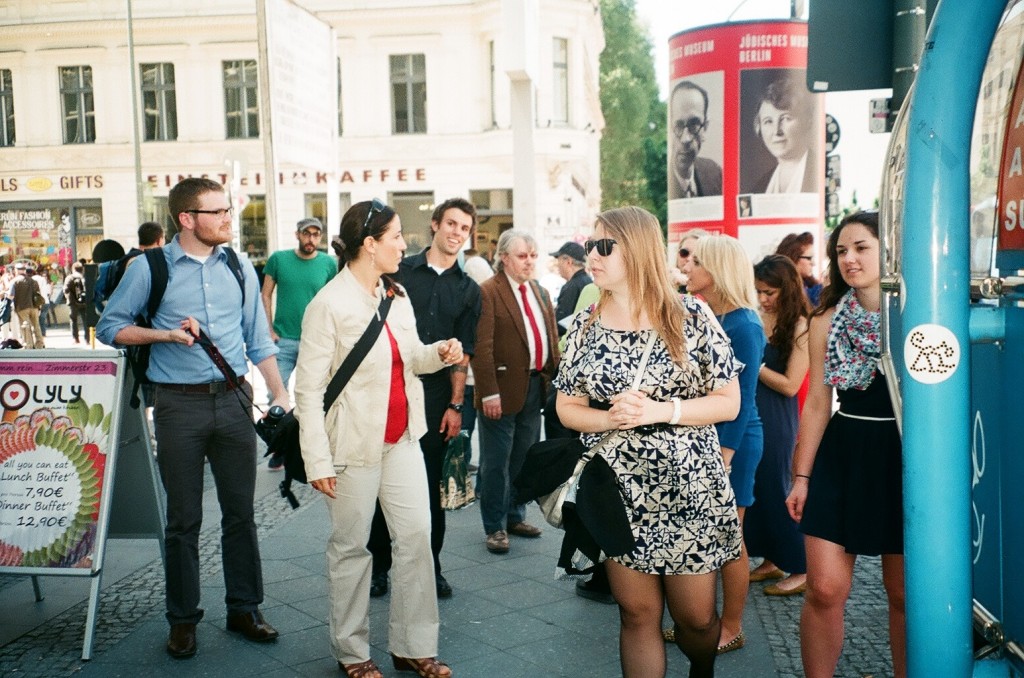
Berlin tour guide Lorena Bianchi leads students and faculty through Berlin on their way to a media visit.
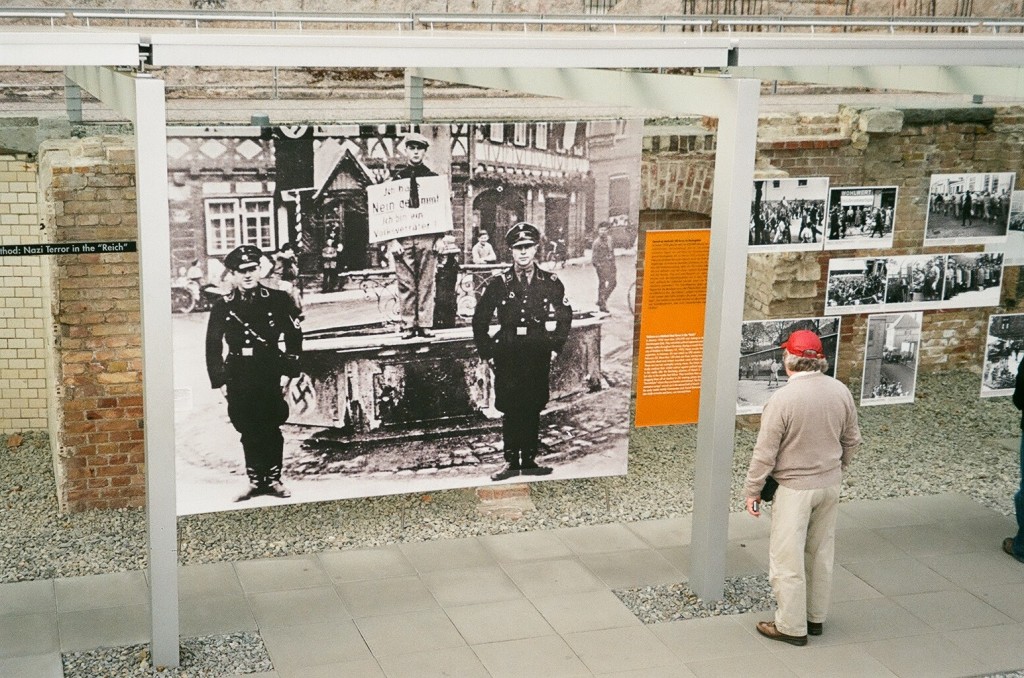
The Topography of Terror, a commemorative site in Berlin, details the Nazi Party’s rise to power in 1933 through the end of the war and the Nuremberg trials. Here Professor David Fabilli views some of the public shaming Jews endured in the years leading up to the Holocaust.
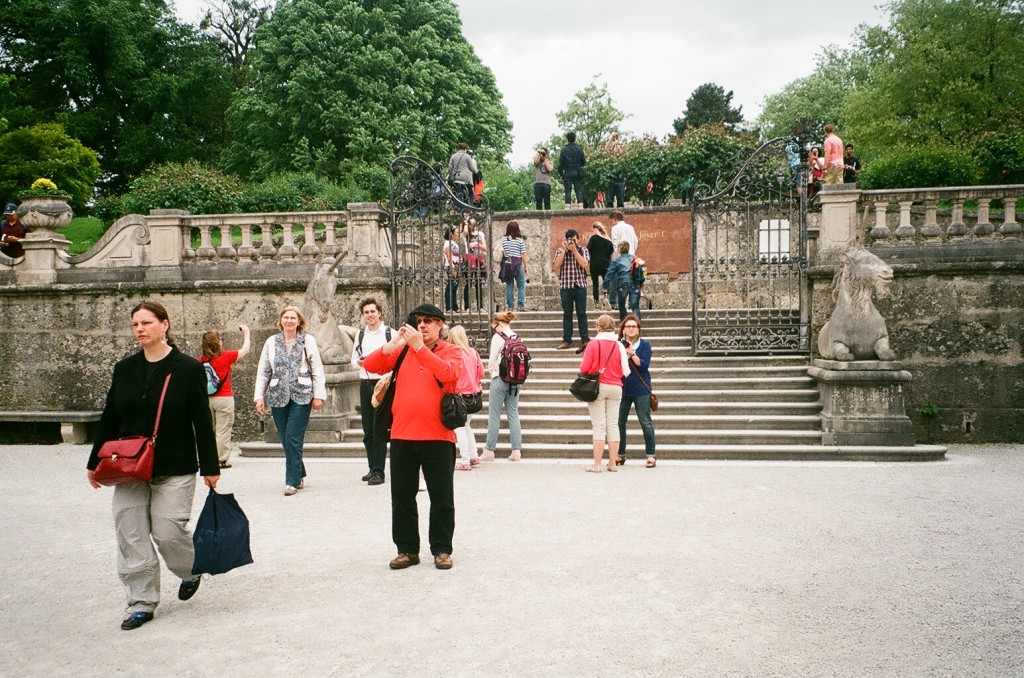
Professor David Fabilli and several Point Park students stop to take photographs at Mirabel Gardens in Salzburg, where scenes from “Sound of Music” were filmed.
